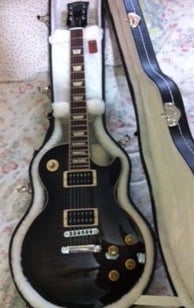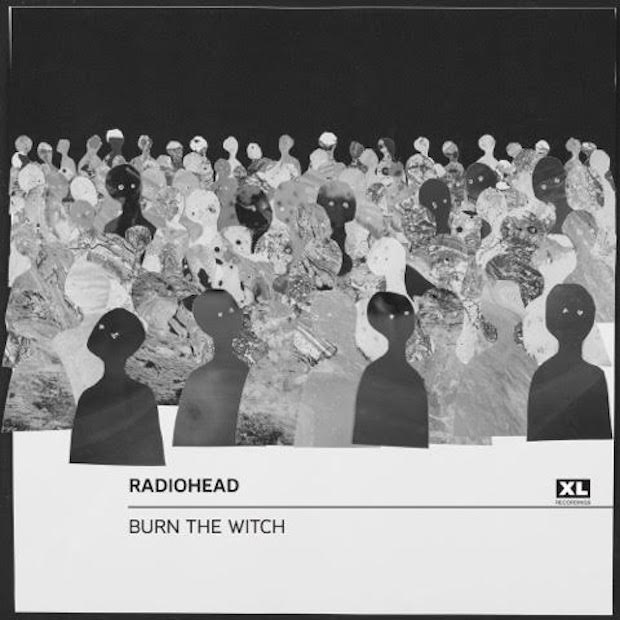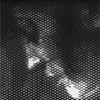Progarchives.com has always (since 2002) relied on banners ads to cover web hosting fees and all.
Please consider supporting us by giving monthly PayPal donations and help keep PA fast-loading and ad-free forever.
/PAlogo_v2.gif) |
|
Post Reply 
|
| Author | ||
HackettFan 
Forum Senior Member 

Joined: June 20 2012 Location: Oklahoma Status: Offline Points: 7946 |
 Topic: Backward notes Topic: Backward notesPosted: May 10 2015 at 20:29 |
|
|
Does anyone know any history behind backward notes. They're fairly commonplace on delays nowadays. Delays I happened to own in the 80s didn't have that option, although I'm pretty certain some bigger rack mount (non-pedal) type delays offered backward notes in the late 70s. I don't know where I think I know that from, though. There are wonderful backward notes at the beginning of Minnamoto's Dream off of the Jade Warrior album, Released, which dates back to 1971. Does anyone know what piece of equipment they may have used to produce them? Was it something that would have been part of a live rig, or just the studio? Were there any earlier recordings with backward notes? What was the first piece of equipment that offered that capability? Thanks in advance.
|
||
 |
||
Polymorphia 
Forum Senior Member 

Joined: November 06 2012 Location: here Status: Offline Points: 8856 |
 Posted: May 11 2015 at 00:15 Posted: May 11 2015 at 00:15 |
|
|
Tape reverse has been around since the 50s at least. Maybe even before then, with Varese. It's exactly as the name implies, playing recorded tracks backwards on a tape deck. "Minnamoto's Dream" probably does just that. I have little knowledge of effects units in the 70s, so I could be wrong about that. Nowadays it can be done digitally in recording programs with various plug-ins.
If you're looking to replicate it in a live setting: Delays essentially just record and playback. If you have a delay where you can edit out the dry signal completely (I've only seen plug-ins like this, but there could be pedals), you could set it to quarter notes, turn the feedback way down, and anticipate whatever you want to play by a quarter note. I also think there might be looping pedals which could playback in reverse. My brother recently bought a pedal with such capabilities, but I don't know how many pedals there are like it. A pedal that reverses in real time will have to wait until we discover time travel, unless it's just a simulation of reverse, which would probably be more convenient anyway. Edited by Polymorphia - May 11 2015 at 00:30 |
||
 |
||
HackettFan 
Forum Senior Member 

Joined: June 20 2012 Location: Oklahoma Status: Offline Points: 7946 |
 Posted: May 12 2015 at 20:26 Posted: May 12 2015 at 20:26 |
|
|
^Thanks. I didn't have the chance to reply till due to work. I think you may likely be right. It was probably a tape reverse.
No actual difficulty in getting backward notes with today's equipment. I have seven pedals that can accomplish it, three different models (Boss DD-7, Digitech Timebender, and Red Panda Particle). My interest is more on the historical side. |
||
 |
||
Polymorphia 
Forum Senior Member 

Joined: November 06 2012 Location: here Status: Offline Points: 8856 |
 Posted: May 13 2015 at 17:10 Posted: May 13 2015 at 17:10 |
|
|
^There is a difficulty getting it real time though. In the delay reverse there's still a "delay."
|
||
 |
||
HackettFan 
Forum Senior Member 

Joined: June 20 2012 Location: Oklahoma Status: Offline Points: 7946 |
 Posted: May 13 2015 at 19:36 Posted: May 13 2015 at 19:36 |
|
|
^True. Which is not too big a deal, but there's always the problem of getting delays to be in sync with the tempo that the rest of the band is following. If there's tap tempo on the delay that can help. If there were any tap tempo functions on early 70s delays, I'd be surprised. I guess in the back of my mind I probably entertained the delightful thought that there was some old way of getting backward notes in real time. The best you could do nowadays would be to use something that gives you a volume swell and then mute the note at the end or have it go through some sort of noise gate, which wouldn't be quite the same. One genuine solution, which I normally consider cheating and try to avoid, is to use a midi guitar or a Roland Guitar synthesizer. I expect those would provide one with enough ADSR control to accomplish it. I do have a Pigtronix Philosopher King, which puts ADSR in the hands of guitarists. I haven't messed with it enough to see if it convincing backward notes. It seems I experimented once with reducing the delay time as far as it would go the Digitech Timebender. I can't remember exactly what it sounded like except that it was greatly diminished. In any case, all of this stuff wasn't around in the early 70s.
|
||
 |
||
HackettFan 
Forum Senior Member 

Joined: June 20 2012 Location: Oklahoma Status: Offline Points: 7946 |
 Posted: May 15 2015 at 09:32 Posted: May 15 2015 at 09:32 |
|
|
I learned from Wiki that purely electronic analog delays based on bucket brigade devices (BBD) were invented some time in the 70s. The year wasn't pinned down any better than that. Wiki also identified BBDs as being invented in 1969, so devices based on them could have emerged any time in the 70s. Does anyone know any specific year any of these BBD analog delays were available? And then would anyone happen to know if any of those analog delays managed to get backward notes, or did they just re-emerge only later with digital delays?
|
||
 |
||
Dean 
Special Collaborator 

Retired Admin and Amateur Layabout Joined: May 13 2007 Location: Europe Status: Offline Points: 37575 |
 Posted: May 15 2015 at 11:50 Posted: May 15 2015 at 11:50 |
|
|
I suspect that the backward notes on the Jade Warrior track are just reverse tape - it sounds effective because the singer is mimicking the slow attack-short decay of backward singing over the top of it while actually singing forward.
BBD was invented as a circuit in 1969 but made out of discrete components ... this meant that only short delays could be made since each bucket stage would be a switch, a capacitor and an amplifier:  As you can imagine building a 512 stage delay like that would require 512 switches, 514 capacitors and 513 amplifiers... and that would fill a rack of equipment, not something you could squeeze into a stomp pedal. The BBD is a chain of sample and hold circuits - closing a switch charges up the first capacitor to the same voltage as the input signal (sample interval) the switch is then opened and the capacitor remains charged at this voltage (hold interval). Because the series of switches opens and closes alternately this sampled voltage propagates along the chain. As each stage is delayed by one clock cycle a 512-stage BBD will delay the signal by 512 times the clock interval.
The problem now is the BBD is a sampling circuit, no different in that respect to a ADC, so they are governed by the same rules of sampling theorem - and our mate Mr Nyquist comes into play - reducing the clock to 4.1KHz means the maximum input frequency we can send through the delay line is now 2.05KHz, and at 1KHz clock the audio is limited to 500Hz. Which is why commercial BBD effects pedals suffered from rubbish high-frequency performance and crap loads of (sampling) noise. Integrated circuit BBDs started to appear in the mid 70s but these were short and primarily aimed at RF applications such as radar systems. Longer delays became available in the early 80s but by then digital delays were starting to appear. The sharp-eyed will have spotted one other limitation of the BBD - they can only go forwards - the charge moves from stage 1 to 2 to 3 .... to 511 to 512, it cannot go backwards from 512 to 511 etc., so reverse notes are not possible. Since digital delays convert the sampled input signal to digital words that are stored in bog-standard RAM, the address sequence can be made to run forwards or backwards. Edited by Dean - May 15 2015 at 12:03 |
||
|
What?
|
||
 |
||
HackettFan 
Forum Senior Member 

Joined: June 20 2012 Location: Oklahoma Status: Offline Points: 7946 |
 Posted: May 15 2015 at 17:52 Posted: May 15 2015 at 17:52 |
|
Thanks a whole bunch, Dean. That connects a lot of dots. The BBDs formed an electronic process that could only go in the one (forward) direction. That makes sense. I had read about a need to apply low pass filtering at both the input and output stage of a BBD. A guitar shop manager just told me today that there was something called an analog reverse, but in looking at some of them online (e.g. the Vox Delaylab), I suspect that they're all really digital and are just modeling an analog delay. |
||
 |
||
Dean 
Special Collaborator 

Retired Admin and Amateur Layabout Joined: May 13 2007 Location: Europe Status: Offline Points: 37575 |
 Posted: May 16 2015 at 05:38 Posted: May 16 2015 at 05:38 |
|
The Vox DelayLab uses 24-bit ADCs and DACs sampled at 48KHz so it is most certainly digital and the claimed 28 second delay time suggests the memory depth is 1Mb per channel. The manual states: "Effect type: ANALOG This models an ANALOG DELAY using a bucket-brigade device (BBD), which is distinctive for its warm distorted sound." ... unfortunately that sentence is ambiguous and can mean that either it models the effect of using a BBD to create an analogue delay OR it uses a BBD to model an Analogue delay. Like you, I suspect it is the former (also given how cheap these pedals are I cannot see them having both Analogue and Digital delay circuits). I also suspect that this pedal is a development of the Korg Tone Works range with a "Vox" badge. (My ancient AX1G can play recorded phrases backwards but it won't reverse individual notes). |
||
|
What?
|
||
 |
||
HackettFan 
Forum Senior Member 

Joined: June 20 2012 Location: Oklahoma Status: Offline Points: 7946 |
 Posted: May 16 2015 at 11:40 Posted: May 16 2015 at 11:40 |
|
Yep, it's definitely ambiguous. On the other hand, why use the word "model", I'm wondering? If it were using a BBD it would simply be analog, as I understand things. No need to say you're modeling it. So, the other interpretation that they're modeling the sound of a BBD circuit rather than using a BBD circuit probably makes more sense. The Vox Delaylab is so much like the Digitech Timebenders that I own that I suspected that, like them, the reverse setting had nothing to do with the analog setting - in other words, it's either set to analog or reverse or digital or tape or any of the other options; reverse is not embedded under analog, and indeed, a diagram of the top panel confirms this. The dial in the top left has many options; analog delay is one, reverse is another. However, in the Delaylab manual on pp.17-18 it refers to "Effect type: Reverse." The second option is given as: "2 . Vintage: Reverse Analog Delay This setting applies modulation to the forward delay and produces a feeling of floating. To obtain the modulation effect, adjust the FWD/RVS balance and feedback." So, it sounds the way it is presented there as embedded under the Analog Delay option, but when I viewed this YouTube vid VOX DelayLab - Using an Expression Pedal with Reverse Delay, just short of 30 seconds in it appears that there is an additional Analog Delay option that is actually embedded under the Reverse option, suggesting to me once again that it is modeling the sound. So, I am still not convinced it's analog, but things get murkier. On pp.12-13 they discuss "Setting the bypass sound." Frankly, I'm not sure I understand all of what that implies, but there is some provocative language on pg.13, which says, "Analog bypass." "Use this to output only the sounds that bypass through the analog circuit, but not through DSP, A/D or D/A." So it appears they're claiming there's an analog circuit involved (The dial on the top panel lets one select tape too. I wonder if there's tape inside?  ). Maybe the analog delay is analog, but the analog reverse is digital? Maybe the Analog Reverse is analog, but the reverse is just simulated using a triggered swell? Like you, I still find digital modeling still the most likely explanation. ). Maybe the analog delay is analog, but the analog reverse is digital? Maybe the Analog Reverse is analog, but the reverse is just simulated using a triggered swell? Like you, I still find digital modeling still the most likely explanation.As far as I know, a triggered swell pedal, like the Boss Slow Engine, wasn't available in the early 70s, which seems strange to me, since they had the volume pedal. They also had the Maestro Auto Wah, which must have had an envelope trigger as a principal component. It seems like they ought to have been able to have an envelope trigger control volume as easily as wah. Thinking out loud here. Edited by HackettFan - May 16 2015 at 11:55 |
||
 |
||
Post Reply 
|
|
| Forum Jump | Forum Permissions  You cannot post new topics in this forum You cannot reply to topics in this forum You cannot delete your posts in this forum You cannot edit your posts in this forum You cannot create polls in this forum You cannot vote in polls in this forum |